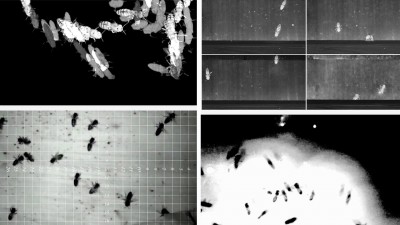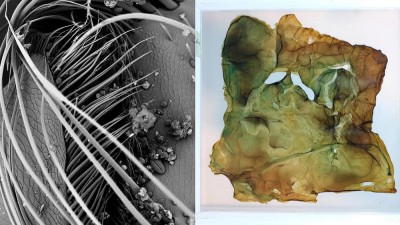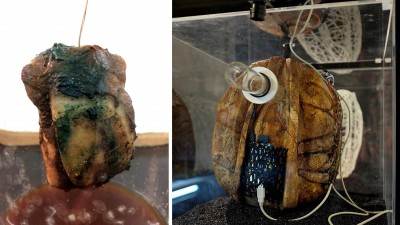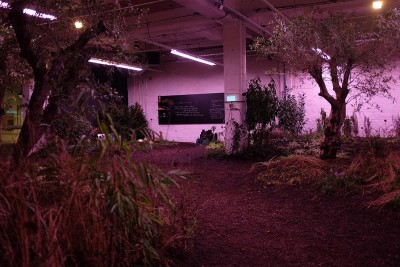I am an artist, a beekeeper and a herbalist. My work is a tight coupling between art and science. It draws on the edge of biology, ecology and technology. My research starts from long-term field observations which I translate in factual and/or fictional stories.
My huge collection of eco-data (video, audio and environmental sensor data) is the basis for the creation of techno-organic objects that are a combination of digital fabrication and craftsmanship.
My (often large scale) installations reflect both the problem and the possible solution, and they are mostly build upon multispecies collaborations.

In my Urban Bee Lab I examine the behaviour of honeybee colonies in relation to the environment.
Their daily actions are at the center of my artistic research and a source of inspiration for my artworks.
In previous projects I studied the development of a honeybee colony through its own sound. The buzz of a colony and its behaviour and conditions are quite related.
Through patterns discovered in the collected audio, video and sensor data, I analyzed the characteristics of the colony and the relationship with its environment.
The data were processed using sophisticated pattern recognition, AI technologies, and graphics software.

The Intelligent Guerilla Beehive is a biotech project. It is the third generation in my series of observation devices. This refuge for swarming honeybees is a mobile -double- sensing device.
It is mirroring the health status of the environment and that of the bees living inside the hive. Colonies of color-changing bacteria, living on the outer skin of the hive, send out warnings at high environmental pollution. The inner skin is a host for colonies of pro-biotic bacteria that support a healthy bee microbiome.
Biomimesis is used as inspiration for the development of the new hive.
Palynology -the study of pollen grains- offers a good starting point for the research. The pollen’ qualities are being examined in terms of usefulness for sensing environmental threaths and foir their adaptive and defensive qualities on micro- and nano-scale.

The next step in the R&D was to implement these biotechnological qualities in the primary materials that are used to build the beehive.
I decided to focus on a few organic materials that are largely available on earth: cellulose and chitosan.
I started a series of experiments to grow cellulose-based biofabrics with micro-organisms.
In collaboration with scientists I decided to augment these cellulose skins with living monitoring technology in the form of bacterial biofilms.
In the hacklab I implemented the bacterial biofilms on the leathery cellulose skin of the beehive. These bacteria are designed to sense environmental pollution and they will change color when they discover a specific pollutant in the air.

The pollution particles are transmitted by the bees themselves when they land upon the skin of the Intelligent Beehive. Fine dust sticking to the hairs on the bees’ body is passed on to the bacteria living in the biofilm on the outer skin of the hive. The bacteria are modified and they provoke a color pattern on the skin.
The ongoing development of these bacterial colonies on the cellulose skin forms a crust that crumbles under ever new layers of bacteria.
This makes that the Intelligent Beehive’s outer membrane becomes protected by a layer of living cells that constantly feed off the dead ones and thus cleans and repairs itself.

Next step (spring 2018) is testing the Intelligent Beehive with a real bee colony inside. In the meantime, I expose my sculptures that express the concept of the Intelligent Guerilla Beehive and with my large-scale bio-installations I try to raise awareness about the decline of our ecosystem.
